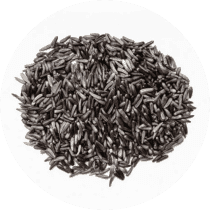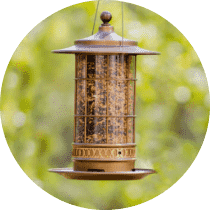House Finch
A species of Haemorhous, Also known as Hollywood Finch Scientific name : Haemorhous mexicanus Genus : Haemorhous
House Finch, A species of Haemorhous
Also known as:
Hollywood Finch
Botanical name: Haemorhous mexicanus
Genus: Haemorhous
Content
Description People often ask General Info
Description
Frequent in urban environments and human-created habitats such as parks and backyards, the little house Finch is known for its loud but pleasant, cheerful singing. It feeds on the ground, mostly on seeds, berries, and other plant material. This bird is highly sociable and very adaptable. It often visits feeders.
Size
15 cm
Life Expectancy
11 years
Nest Placement
Tree
Clutch Size
2 - 6 eggs
Incubation Period
1 - 6 broods
Number of Broods
13 - 14 days
Nestling Period
12 - 19 days
Feeding Habits
House Finch primarily consume plant materials, favoring seeds (including wild mustard, knotweed, thistle), buds, and fruits (mulberry, poison oak, cactus). They feed on various orchard fruits and prefer black oil sunflower seeds at feeders. They occasionally eat small insects and forage both on the ground and in vegetation.
Habitat
House Finch thrive in a variety of habitats, primarily favoring urban and suburban areas where they are often found around buildings and lawns. They are adaptable, residing near human settlements, including farms, barns, and stables. In their western native range, house Finch inhabit natural landscapes such as deserts, grasslands, chaparral, oak savannahs, and riparian zones, typically below 6,000 feet. These birds do not have a strict preference for altitude but are commonly found in lower elevation regions with mild climates and accessible vegetation.
Nest Behavior
During the nesting period, house Finch builds nests, with a preference for varied locations from trees to building nooks. The parents collaboratively prepare the nest, lay eggs, and provide care for their young, engaging in multiple clutches throughout the breeding season.
Nest Characteristics
House Finch's nest is a cup-shaped structure with an overall width of 3-7 inches; the inner cup spans 1-3 inches, reaching up to 2 inches in depth. Constructed from stems, leaves, rootlets, twigs, string, wool, and feathers, it's commonly situated in trees, cacti, rock ledges, or building structures like vents and ledges.
Dite type
Granivorous
People often ask
General Info
Feeding Habits
Bird food type

Black Oil Sunflower Seeds

Hulled Sunflower Seeds

Safflower

Nyjer
Bird Feeder Type

Large Tube Feeder

Small Tube Feeder

Large Hopper

Small Hopper

Platform
Sounds
Song
Recording location: Mexico
Song
Recording location: Mexico
Call
Recording location: United States
Behavior
House Finch exhibits high sociability, typically observed in groups outside breeding seasons. Daily activities encompass ground feeding, visiting bird feeders, and foraging in fruit-bearing vegetation. They show a preference for high perches, such as treetops and power lines, for rest and vigilance. During the breeding season, courtship behaviors include males performing food offerings to the females, characterized by a unique ritual of bill-pecking and wing-fluttering by the female, followed by mock and actual feeding from the male.
Species Status
Not globally threatened.
Scientific Classification
Phylum
Chordates Class
Birds Order
Perching birds Family
Finches Genus
Haemorhous Species
House Finch 